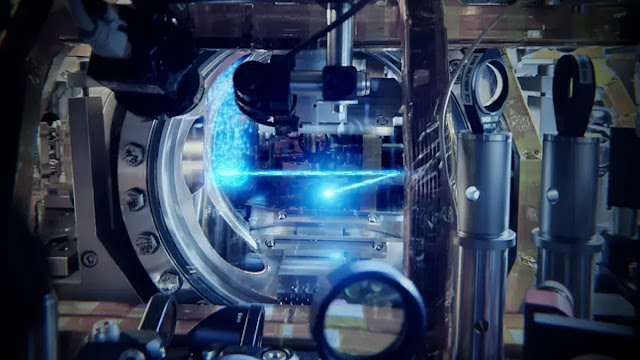The practical applications could be limitless.
 |
The central part of the experiment in which the coherent
matter waves are created. |
According to quantum mechanics, things like atoms should
also be considered waves, and in theory, we could create "atom
lasers" that emit coherent waves of matter. Making these matter waves
persistent so they may be applied in real-world scenarios presents a challenge.
According to a news, a group of
scientists in Amsterdam have now demonstrated that this is feasible with some
modification of the idea that powers the atom laser, known as the Bose-Einstein
Condensate, or BEC for short.
Creating a continuous Bose-Einstein Condensate
The researchers have now managed to solve the difficult
problem of creating a continuous Bose-Einstein Condensate. Florian Schreck, the
team leader, explained in the statement how they did it.
Atoms were gradually cooled in one location in earlier tests. We chose to distribute the cooling processes in our setup not over time, but rather in space: we move the atoms as they go through successive chilling steps. Ultimately, the experiment's core is reached by ultracold atoms, which can be utilised to create coherent matter waves in a BEC. However, fresh atoms are already under route to replace the BEC as these atoms are being utilised. We can effectively continue the procedure in this manner indefinitely," Schrek stated.
While the idea was relatively simple, putting it into
practice was not. Chun-Chia Chen, first author of the study recalled:
“The group, which was still in Innsbruck at the time, discovered a method in 2012 that made it possible to shield a BEC from laser cooling light, making it possible to use laser cooling for the first time all the way down to the degenerate state required for coherent waves. Even while this was a crucial first step in the direction of solving the long-standing problem of building a continuous atom laser, it was also obvious that further equipment would be required to advance the project. When we moved to Amsterdam in 2013, we had no money, no room, no confidence, and a staff that was fully supported by grants from friends and family. It was early on Christmas morning 2019, six years later, and the experiment was finally about to come together. In order to overcome a final technical obstacle, we added an additional laser beam, and as soon as we did, every picture we took revealed a BEC—the first continuous-wave BEC”.
Now that a continuous Bose-Einstein condensate has been
produced, the researchers intend to use the laser to produce a steady matter
output beam. Applications for such lasers would be infinite if they could
create stable beams in addition to perpetual operation.
Naturally, there is still more work for the researchers to
do. However, their work is intriguing and promising.